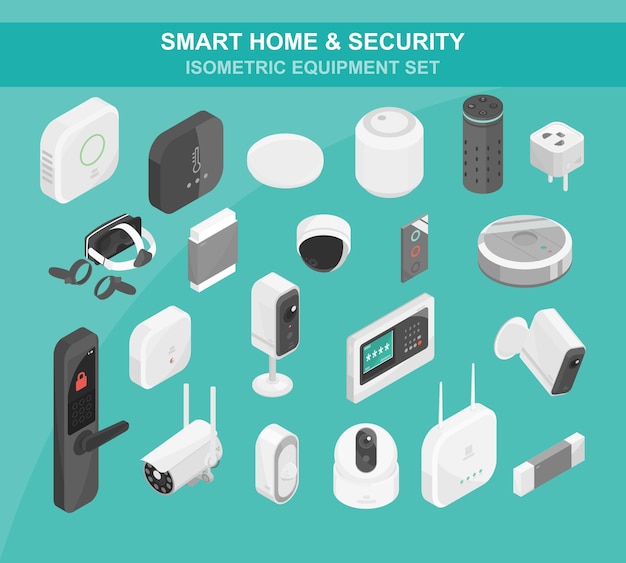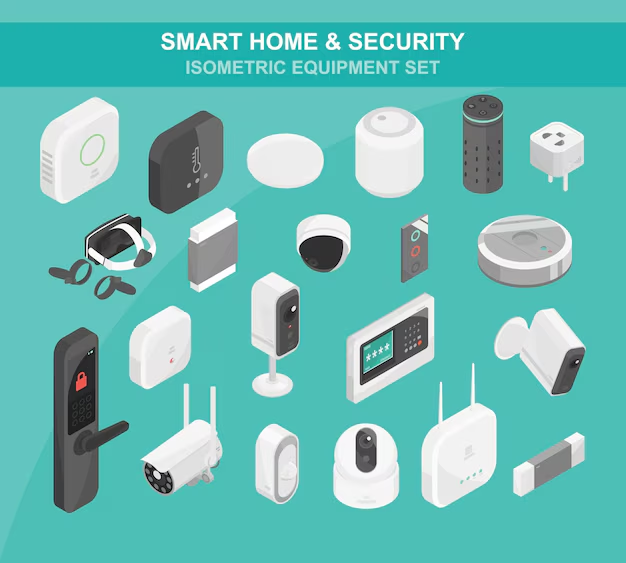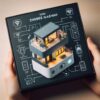
Image Source: FreeImages
Introduction to Smart Homes and Home Assistants
As technology continues to evolve, our homes are becoming smarter and more connected, embracing the convenience of smart home automation. A smart home, equipped with a comprehensive home automation system, leverages internet-connected devices to automate and manage aspects of daily life such as lighting, heating, security, and entertainment systems. At the heart of a truly intelligent home is the home assistant, who makes everyday tasks simpler and more efficient.
A home assistant, powered by artificial intelligence, serves as the core of smart home assistant technology, acting as a home assistant hub. It enables you to control smart devices within your home through voice commands, mobile apps, or a web interface. With a home assistant, managing your smart devices, creating custom automations, and enhancing your home experience becomes effortless and intuitive.
Benefits of Using a Home Assistant
The convenience of smart home control through a voice assistant is among the top benefits of integrating a home assistant into your smart home setup. Instead of manually adjusting each smart device, a simple voice command to your home assistant can save you time and effort. Whether it’s dimming the lights, setting the perfect temperature, or playing your favorite tunes, your home assistant has got it covered.
Moreover, a home assistant significantly boosts the security and safety of your smart home. It seamlessly integrates with security cameras, door locks, and motion sensors, offering real-time alerts and monitoring. This level of home security ensures peace of mind, knowing your home is well-protected and that you’re in full control of its security features.
In addition, a home assistant enables a high degree of customization and personalization through a home automation app. You can design custom automations and routines that align with your lifestyle and preferences. Imagine starting your day with a ‘Good Morning’ routine that automatically lights up your home, adjusts the thermostat, and plays your preferred news podcast, all tailored to your unique needs.
Overview of Popular Home Assistant Platforms
When exploring home assistant platforms, there’s a variety of popular choices, including open source home automation solutions and proprietary home automation software. Well-known platforms like Home Assistant, Google Assistant, and Amazon Alexa each offer unique features and strengths, making it crucial to assess your specific needs before deciding.
Home Assistant stands out as an open-source home automation platform, celebrated for its flexibility and customization options. Compatible with a range of hardware, including Raspberry Pi, Docker, and Proxmox, and featuring a plethora of integrations as showcased on Home Assistant GitHub, it empowers you to control and automate virtually anything in your smart home.
Google Assistant, developed by Google, is a voice-controlled virtual assistant that integrates with Google devices and Android smartphones. It allows you to control smart devices, answer queries, play music, and execute a multitude of tasks using voice commands, making your life easier and more connected.
Amazon Alexa, developed by Amazon, is another leading home assistant platform. Integrated into Amazon Echo devices, it can control smart devices, play music, provide weather updates, and a lot more. With a vast array of skills and integrations, Amazon Alexa can be customized to meet your specific home automation needs.
Setting Up a Smart Home with Home Assistant
With an understanding of the benefits of home assistants and the array of platforms available, setting up a smart home with Home Assistant is an exciting next step. Home Assistant, known for its versatility and compatibility with various hardware, including the Raspberry Pi, offers a robust foundation for Raspberry Pi home automation and open source home automation, allowing you to create a highly personalized smart home environment.
The Raspberry Pi, a compact and cost-effective single-board computer, serves as an excellent smart home hub. To embark on this journey, you’ll need a Raspberry Pi board, an SD card, a power supply, and a compatible operating system. With these components in hand, you’re all set to install Home Assistant and dive into the world of smart home automation.
Getting started with Home Assistant on your Raspberry Pi is a breeze. Begin by downloading the Home Assistant operating system image and flashing it onto your SD card. After preparing the SD card, insert it into the Raspberry Pi, power it up, and watch as Home Assistant kicks off the installation, guiding you through the setup process.
Once Home Assistant is up and running, you can access its web interface from any device connected to your local network. This is where the fun begins! You can now integrate Home Assistant compatible devices, set up automations, and tailor the dashboard to your liking, transforming your living space into a smarter home.
Choosing the Right Hardware for Your Smart Home
In setting up your smart home with Home Assistant, selecting the right hardware is crucial. While the Raspberry Pi is a popular and effective choice, exploring other options like Docker and Proxmox could enhance your setup. Consider the best hardware for Home Assistant based on your specific needs and budget to ensure a seamless smart home experience.
Docker offers a streamlined platform for running applications in lightweight, isolated containers. It’s an excellent choice for deploying and managing Home Assistant, allowing for a modular approach to your smart home projects. Whether you’re juggling multiple initiatives or prefer a more segmented setup, Docker simplifies the process.
Proxmox presents a powerful virtualization platform, enabling you to run multiple virtual machines and containers on a single physical server. It’s an ideal solution for a comprehensive smart home system, allowing for dedicated virtual machines for Home Assistant, media servers, and more, ensuring efficient performance and resource management.
When it comes to choosing the best home assistant devices for your smart home, it’s essential to weigh factors like processing power, storage capacity, and expandability. Opt for hardware that not only meets the current demands of your setup but also has the potential to support future expansions.
Integrating Devices and Automations with Home Assistant
After setting up Home Assistant and selecting the optimal hardware, the next step is to integrate your smart devices and start crafting automations. Home Assistant’s compatibility with a vast array of smart devices, from lights and thermostats to cameras and door locks, makes it a central piece of your smart home ecosystem.
Integrating a device with Home Assistant involves installing the necessary integration component, typically through the Home Assistant web interface or by adding to your configuration.yaml file. Once integrated, you gain the ability to control and monitor your devices directly from Home Assistant, streamlining your smart home management.
Creating automations in Home Assistant, powered by its robust automation engines and scripting capabilities, enables you to automate tasks based on specific conditions or events. Imagine lights that turn on automatically when motion is detected in a room. These automations are easily set up via the Home Assistant web interface or by editing the automations.yaml file, adding a layer of convenience and intelligence to your home.
Home Assistant also supports advanced features such as scripts, scenes, and templates. Scripts allow you to define a sequence of actions that can be triggered manually or as part of an automation. Scenes allow you to save and recall the state of multiple devices, creating different moods or settings with a single command. Templates provide a powerful way to customize the behavior and appearance of Home Assistant components.
Exploring Advanced Features and Customizations in Home Assistant
While Home Assistant offers a wide range of features out of the box, there are also advanced features and customizations that can elevate your smart home experience. Exploring these best home assistant features can truly take your home assistant setup to the next level.
One advanced feature of Home Assistant is the ability to create custom Lovelace dashboards. Lovelace is the default interface for Home Assistant and allows you to create customized dashboards with different cards and layouts. You can add cards for specific devices, create groups of related devices, and arrange them in a way that makes sense to you.
Another advanced feature is the ability to create custom integrations and components using the Home Assistant API. This opens up a world of possibilities, allowing you to extend the functionality of Home Assistant and integrate it with other services and platforms. For instance, you could create an open source integration to control your smart home devices using voice commands from a chatbot or integrate with a weather service to automatically adjust your thermostat based on the current weather conditions. Engaging with the home assistant forum can provide additional insights and support for these custom projects.
Home Assistant also supports the use of add-ons, which are pre-configured applications that can be easily installed and integrated with your Home Assistant setup. Add-ons provide additional functionality and services, such as media servers, remote access, and backup solutions, effectively turning your setup into a comprehensive home assistant server. You can browse and install add-ons directly from the Home Assistant web interface.
Troubleshooting Common Issues with Home Assistant
Like any complex system, Home Assistant may encounter issues or errors from time to time. Fortunately, there are common troubleshooting steps that can help you identify and resolve these issues. Consulting the home assistant forum can be a great way to find solutions and advice from the community.
One common issue is the failure of devices or integrations to be detected by Home Assistant. This can be caused by a variety of factors, such as incorrect configuration, network issues, or compatibility problems. To troubleshoot this issue, ensure that the device or integration is properly configured and supported by Home Assistant. Check the logs for any error messages or warnings that may provide clues to the problem. The home assistant forum can be a valuable resource for resolving these types of issues.
Another common issue is the failure of automations or scripts to execute as expected. This can be due to incorrect automation or script configuration, missing dependencies, or other factors. To troubleshoot this issue, review the configuration of your automations or scripts and ensure that all required entities and services are properly defined. Check the Home Assistant logs for any error messages related to the automation or script. Engaging with the home assistant forum can also provide insights and assistance with scripting challenges.
If you are experiencing performance issues with Home Assistant, such as slow response times or high resource usage, there are steps you can take to optimize its performance. Ensure that you are running the latest version of Home Assistant and that your hardware meets the recommended specifications. Consider disabling unnecessary integrations or components, and review the logs for any errors or warnings that may indicate performance bottlenecks. The home assistant forum and home assistant blog are excellent resources for tips and advice on improving performance.
Future Trends in Smart Home Technology and the Role of Home Assistants
As smart home technology continues to evolve, we can expect to see exciting advancements and new trends in the coming years. One of the key areas of development is the integration of artificial intelligence and machine learning into home assistants, making them even more intuitive and personalized. This evolution will enhance the capabilities of smart home assistants and voice assistants, offering users an unprecedented level of convenience and personalization.
Another trend is the increasing interoperability and integration between different smart devices and platforms, paving the way for a unified smart home ecosystem. This will allow users to create a seamless smart home experience by combining home assistant compatible devices and services from various manufacturers. Home assistants will play a crucial role in this integration, acting as the central hub that brings everything together.
We can also expect to see advancements in voice recognition and natural language processing, making it even easier to interact with voice assistant-equipped home assistants. This will enable more complex and natural conversations, allowing users to control their smart homes using conversational commands. Home assistants will become even more capable and understanding, making them an essential part of our daily lives.
Conclusion
In conclusion, a smart home assistant is a powerful tool that can enhance your smart home automation experience. It provides convenience, security, and customization, allowing you to control and automate various aspects of your home with ease. With platforms like Home Assistant, Google Assistant, and Amazon Alexa, you have a wide range of options to choose from.
Setting up a smart home with Home Assistant is a straightforward process, and the Raspberry Pi is a popular choice for hardware, offering a great foundation for Raspberry Pi home automation. By integrating your smart devices and creating automations, you can create a truly intelligent home that suits your lifestyle and preferences, leveraging open-source home automation solutions.
As smart home technology continues to evolve, we can expect to see exciting advancements and new trends in the future. Smart home assistants will play a key role in these developments, enabling us to create more personalized and connected homes.
So why wait? Start enhancing your smart home experience with a smart home assistant today and enjoy the convenience, security, and customization it brings to your everyday life, making your home automation system more intuitive and user-friendly.
Ready to take your smart home to the next level? Get started with a home assistant today and experience the future of home automation.








